#Hedwig of Andechs
Explore tagged Tumblr posts
Text
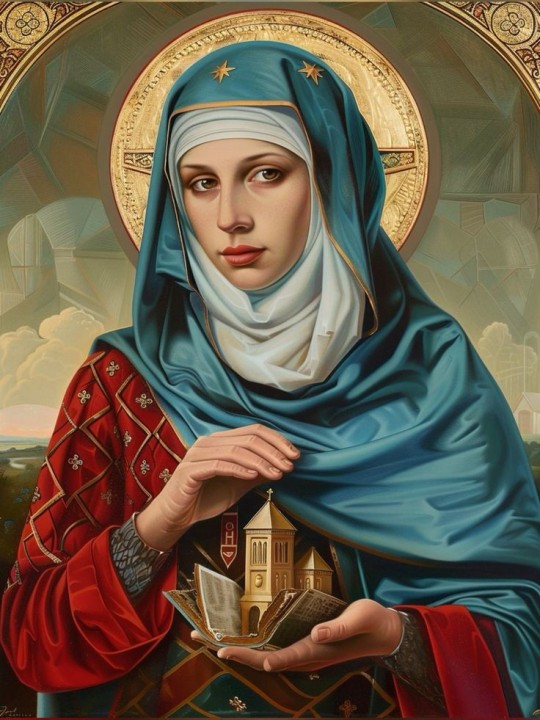
St. Hedwig of Andechs (1174-1243), Duchess of Silesia and High Duchess consort of Poland.
#Hedwig of Andechs#saints#st hedwig of silesia#House of Andechs#duchess of silesia#high duchess of poland#Świyntŏ Hyjdla#Heilige Hedwig von Andechs#Święta Jadwiga Śląska#Duchy of Greater Poland#Księstwo wielkopolskie#Ducatus Poloniae Maior#Królestwo Polskie#Regnum Poloniae#a.i.#catholic church#artificial intelligence#christianism#catholicism#a.i. art#art
5 notes
·
View notes
Photo

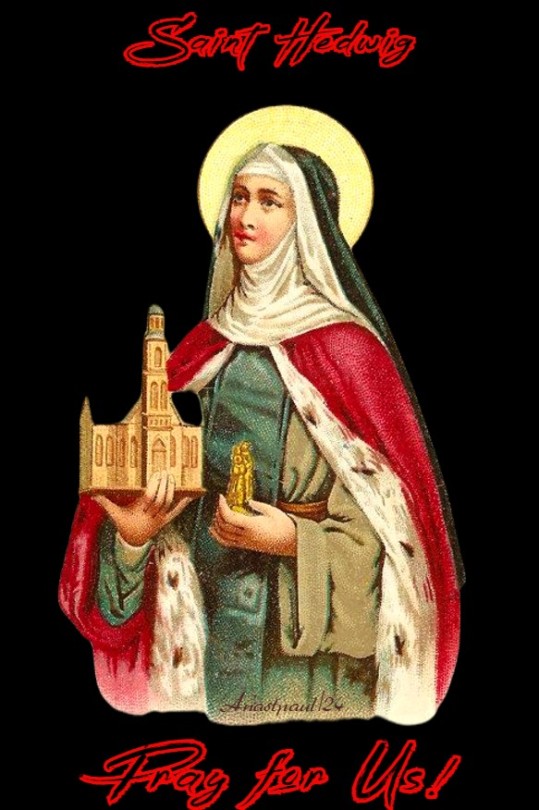
One Minute Reflection – 16 October – “The Month of the Most Holy Rosary and of the Angels” – Feast of the Purity of the Blessed Virgin Mary and of St Hedwig of Andechs (1174-1243) Widow – Proverbs 31:10-31, Matthew 13:44-52 – Scripture search here: https://www.drbo.org/ “The Kingdom of Heaven is like a treasure hidden in a field; he who finds it, hides it and in his joy, goes and sells all that he has and buys that field.” – Matthew 13:44 REFLECTION – “In my opinion, it would be unworthy of us to withdraw, even for a moment, from the contemplation of Christ. When we have lost sight of Him, even briefly, let us turn our mind’s regard back to Him, directing the eyes of our heart, as by a very straight line. For everything lies in the soul’s inner sanctuary. There, after the devil has been expelled and the vices no longer reign at all, the Kingdom of God can be established in us, as the Evangelist says: “For amen I say to you that the Kingdom of God is within you.” But within us there can be nothing else than knowledge or ignorance of the truth and the love, of either the vices, or the virtues, by which we make ready a Kingdom in our hearts, either for the devil or for Christ. The Apostle Paul also describes the characteristics of this Kingdom when he says: “For the Kingdom of God is not food and drink but righteousness and peace and joy in the Holy Ghost.” Thus, if the Kingdom of God is within us and the Kingdom of God is itself, righteousness and peace and joy, then, whoever abides in these things, is undoubtedly in the Kingdom of God … Let us lift up the eyes of our soul to that Kingdom which is endless joy!” – St John Cassian (c360-435) Monk, Theologian, Founder of Monasteries, Father of the Church, Disciple of St John Chrysostom (Conferences No 1).
(via One Minute Reflection – 21 August– ‘ … For everything lies in the soul’s inner sanctuary. …’ – AnaStpaul)
7 notes
·
View notes
Photo
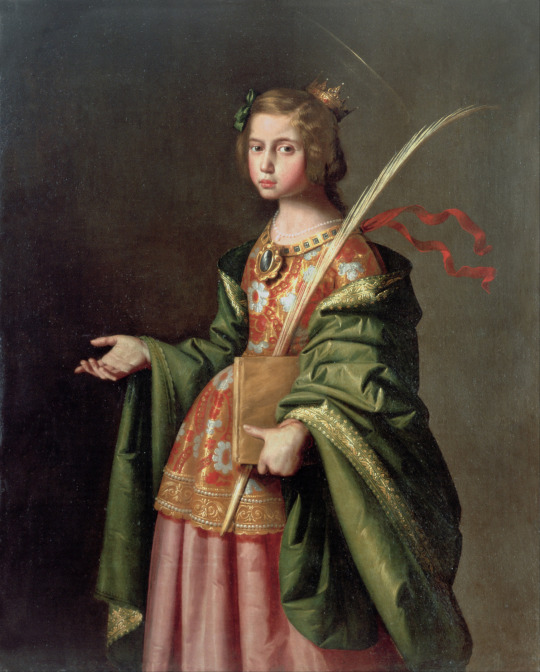
THE DESCRIPTION OF SAINT ELIZABETH OF HUNGARY The Symbol of Christian Charity and Patron of Hungary Feast Day: November 17
"As in heaven, Your will is punctually performed, so may it be done on earth by all creatures, particularly in me and by me."
Elizabeth of Thuringia, a symbol of Christian charity, an early member of the Third Order of St. Francis and is today honored as its patroness, the patroness of Hungary, the Archdiocese of Bogotá in Colombia, and of the Archdiocese of Jaro in Iloilo, was born on July 7, 1207 in Pozsony, Kingdom of Hungary (modern-day Bratislava, Slovakia), and is the daughter of King Andrew II of Hungary (Andrew of Jerusalem) and Gertrude of Merania, who was killed at the hands of the nobles led by Peter, son of Töre. Her mother's sister was Hedwig of Andechs, the wife of Duke Heinrich I of Silesia. Her ancestry included many notable figures of European royalty, going back as far as Vladimir the Great of the Kievan Rus'.
According to a different tradition, Elizabeth lived in the Castle of Posonium until the age of four. After she was brought to the court of the rulers of Thuringia in central Germany, Elizabeth was married at a young age in 1221 to Louis IV, Landgrave of Thuringia (Ludwig IV), the son of Hermann I, giving birth to three children, and a future union which would reinforce political alliances between the two families. She was raised by the Thuringian court and would have been familiar with the local language and culture. That same year, Louis was enthroned as landgrave. Their marriage appears to have been happy.
Her husband was fascinated by her charm and holiness. Whenever he went back from an official trip, he would always give her a present; and used to say that he would rather cast away a mountain of gold than give her up. In 1223, Franciscan friars arrived, and the teenage Elizabeth not only learned about the ideals of Francis of Assisi, but started to live them. Louis was not upset by his wife's charitable efforts, believing that the distribution of his wealth to the poor would bring eternal reward; he is venerated in Thuringia as a saint, though he was never canonized by the church.
It was also about this time that the priest and later inquisitor Konrad von Marburg gained considerable influence over Elizabeth when he was appointed as her confessor and later, spiritual father. When floods, famine and plague wrought havoc in Thuringia in the spring of 1226, Louis, a staunch supporter of the Hohenstaufen Frederick II, the Holy Roman Emperor, represented Frederick II at the Imperial Diet held in Cremona. Elizabeth assumed control of affairs at home and distributed alms in all parts of their territory, even giving away state robes and ornaments to the poor.
A few years later, Elizabeth's life begins to irrevocably changed forever. On September 11, 1227, when her husband Louis, en route to join the Sixth Crusade, died of a fever in Otranto at the age of just 26 years old, just a few weeks before the birth of her daughter Gertrude.
Upon hearing the news of her husband's death and Louis' body returned to Germany, she reportedly said and cried: 'He is dead. He is dead. It is to me as if the whole world died today!'
His remains were returned to Elizabeth in 1228 and entombed at the abbey of Reinhardsbrunn. After Louis' death, his brother, Henry Raspe, assumed the regency during the minority of Elizabeth's eldest child, Hermann. After bitter arguments over the disposal of her dowry—a conflict in which Konrad was appointed as the official Defender of her case by Pope Gregory IX—Elizabeth left the court at Wartburg and moved to Marburg in Hesse.
Following her husband's death, Elizabeth made solemn vows to Konrad similar to those of a nun. These vows included celibacy, as well as complete obedience to Konrad as her confessor and spiritual director. Konrad's treatment of Elizabeth was extremely harsh, and he held her to standards of behavior which were almost impossible to meet. Among the punishments he is alleged to have ordered were physical beatings; he also ordered her to send away her three children. Her pledge to celibacy proved a hindrance to her family's political ambitions. Elizabeth was more or less held hostage at Pottenstein, the castle of her uncle, Bishop Ekbert of Bamberg, in an effort to force her to remarry. Elizabeth, however, held fast to her vow, even threatening to cut off her own nose so that no man would find her attractive enough to marry.
Sophie of Thuringia, Elizabeth's second child who will later on becoming one of the figures in the War of the Thuringian Succession and founder of the Brabant dynasty of Hesse, married Henry II, Duke of Brabant, and was the ancestress of the Landgraves of Hesse. Elizabeth's third and youngest child, Gertrude of Altenberg, was born several weeks after the death of her father; she became abbess of the monastery of Altenberg Abbey, Hesse near Wetzlar.
Thereafter, Elizabeth entered the Third Order of St. Francis (Secular Franciscan Order) in 1228, and promised never to marry again. Elizabeth spent her final years attending to the sick at the hospital of Marburg, which she had built, and supporting hundreds of poor people.
Perhaps Elizabeth is best known for her miracle of the roses. While taking bread to the poor in secret, she met her husband Ludwig on a hunting party. Ludwig, to quell suspicions of the gentry that she was stealing treasure from the castle, asked her to reveal what was hidden under her cloak. In that moment, her cloak fell open and a vision of white and red roses could be seen, which proved to Ludwig that God's protecting hand was at work. According to the Vitae, Louis was never troubled by her charity and always supported it. In some versions of this story, her brother-in-law, Heinrich Raspe, questions her. Hers is one of many miracles that associate Christian saints with roses.
Her health started to declined, and died on November 17, 1231 in Marburg, Landgraviate of Thuringia, Holy Roman Empire (modern-day Hesse, Germany). She was just only 24 years old. Elizabeth's popularity and legacy on caring of the poor was so great resulted in her canonization as a saint on May 27, 1235 in Perugia, Italy by Pope Gregory IX. There are two major shrines in her honor - in Košice, Slovakia and in Marburg, Germany.
Konrad commented these words: 'In spite of her many active works for the sick and the poor. I have seldom seen a more contemplative woman.'
#random stuff#catholic#catholic saints#elizabeth of hungary#elizabeth of thuringia#franciscans#secular franciscan order#hungary
12 notes
·
View notes
Text
The Church remember St. Elizabeth of Hungary, Princess.
Ora pro nobis.
Saint Elizabeth of Hungary (7 July 1207 – 17 November 1231 AD), also known as Saint Elizabeth of Thuringia or Saint Elisabeth of Thuringia, was a princess of the Kingdom of Hungary, Landgravine of Thuringia, Germany, and a greatly venerated Catholic saint who was an early member of the Third Order of St. Francis, by which she is honored as its patroness.
Elizabeth was married at the age of 14, and widowed at 20. After her husband's death she sent her children away and regained her dowry, using the money to build a hospital where she herself served the sick. She became a symbol of Christian charity after her death at the age of 24 and was canonized on 25 May 1235.
Elizabeth was the daughter of King Andrew II of Hungary and Gertrude of Merania. Her mother's sister was Hedwig of Andechs, wife of Duke Heinrich I of Silesia. Her ancestry included many notable figures of European royalty, going back as far as Vladimir the Great of the Kievan Rus. According to tradition, she was born in Hungary, possibly in the castle of Sárospatak on 7 July 1207 AD.
Elizabeth was brought to the court of the rulers of Thuringia in central Germany, to be betrothed to Louis IV, Landgrave of Thuringia (also known as Ludwig IV), a future union which would reinforce political alliances between the families.[a] She was raised by the Thuringian court and would have been familiar with the local language and culture.
In 1221 AD, at the age of fourteen, Elizabeth married Louis; the same year he was enthroned as Landgrave, and the marriage appears to have been happy.
In 1223 AD, Franciscan friars arrived, and the teenage Elizabeth not only learned about the ideals of Francis of Assisi, but started to live them. Louis was not upset by his wife's charitable efforts, believing that the distribution of his wealth to the poor would bring eternal reward; he is venerated in Thuringia as a saint, though he was never canonized by the Church.
It was also about this time that the priest and later inquisitor Konrad von Marburg gained considerable influence over Elizabeth when he was appointed as her confessor. In the spring of 1226 AD, when floods, famine, and plague wrought havoc in Thuringia, Louis, a staunch supporter of the Hohenstaufen Frederick II, Holy Roman Emperor, represented Frederick II at the Imperial Diet held in Cremona.
Elizabeth assumed control of affairs at home and distributed alms in all parts of their territory, even giving away state robes and ornaments to the poor. Below Wartburg Castle, she built a hospital with twenty-eight beds and visited the inmates daily to attend to them.
Elizabeth is perhaps best known for the miracle of the roses which says that whilst she was taking bread to the poor in secret, she met her husband Ludwig on a hunting party, who, in order to quell suspicions of the gentry that she was stealing treasure from the castle, asked her to reveal what was hidden under her cloak. In that moment, her cloak fell open and a vision of white and red roses could be seen, which proved to Ludwig that God's protecting hand was at work.
Her husband, according to the vitae, was never troubled by her charity and always supported it. In some versions of this story, it is her brother in law, Heinrich Raspe, who questions her. Hers is the first of many miracles that associate Christian saints with roses, and is the most frequently depicted in the saint's iconography.
Almighty God, by your grace your servant Elizabeth of Hungary recognized and honored Jesus in the poor of this world: Grant that we, following her example, may with love and gladness serve those in any need or trouble, in the name and for the sake of Jesus Christ; who lives and reigns with you and the Holy Spirit, one God, for ever and ever.
Amen.
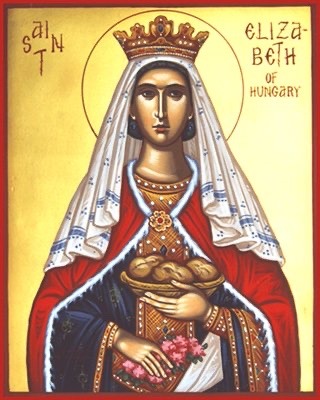
#father troy beecham#christianity#troy beecham episcopal#jesus#father troy beecham episcopal#saints#god#salvation#peace
6 notes
·
View notes
Text
fun fact: Hedwig was named after Saint Hedwig of Andechs (1174–1243), Duchess of Silesia, who is the patron saint of orphans.
🥺🥺🥺
any piece of writing will use st jude symbolism and i will go crazy. literally the patron saint of lost causes. just tugs at my heartstrings
1K notes
·
View notes
Text
Hedwig, Herzogin von Schlesien, wurde 1174 auf Schloss Andechs am Ammersee in Oberbayern geboren. Bereits in ihrem 13. Lebensjahr wurde sie, wie es damals üblich war, verheiratet, und zwar mit Herzog Heinrich von Schlesien, den sie noch nie zuvor gesehen hatte (Auch das war damals üblich). Mit 14 wurde sie zum ersten Mal Mutter. Die vom Vater gestiftete Kinder-Ehe wurde überaus glücklich. Die Herzogin wurde eine vorbildliche Gattin und Mutter. Nach der Geburt des siebenten Kindes bat sie ihren Gatten, mit ihm enthaltsam leben zu dürfen. Der Herzog respektierte ihren Wunsch. Während ihres ganzen Lebens widmete sich die Herzogin dem Wohl ihres Volkes. Von ihren Einkünften verwendete sie nur einen kleinen Teil für sich, mit dem anderen stiftete und erhielt sie soziale Einrichtungen. Mit viel Klugheit, großem Weitblick, charakterlicher Festigkeit und Organisationstalent unterstützte sie ihren Gatten bei der Vertiefung des christlichen Lebens und der kulturellen Förderung ihrer neuen Heimat. Sie rief mehrere Orden ins Land, stiftete Spitäler und andere Krankenpflegeeinrichtungen, war eine große Wohltäterin und wurde vom Volk bald wie eine Heilige verehrt. 1238 starb der geliebte Gatte, 1241 fiel ihr ältester Sohn im Kampf gegen die eingefallenen Mongolen. Nach diesen schweren Schicksalsschlägen zog sich die gütige Landesmutter in das Kloster Trebnitz zurück, wo sie bereits zwei Jahre später, am 14.Oktober 1243 im Alter von 70 Jahren starb. Hedwig ist die Schutzheilige von Polen und von Schlesien, die Patronin der Brautleute und der aus ihrer Heimat Vertriebenen. Bauernregeln: "Hedwig und Galle (Gallus) machen das schöne Wetter alle." - "Sankt Hedwige gibt den Zucker in die Rübe." - "Wenn Hedwig kommt, schneid' ab den Kohl, er schmeckt im Winter trefflich wohl." - "Mit Sankt Hedwig und Sankt Gall', schweigt der Vögel Sang und Schall." Land Europa Polen Schlesien Stand Adel Ehefrau Besonderheiten Sozialengagement
0 notes
Photo
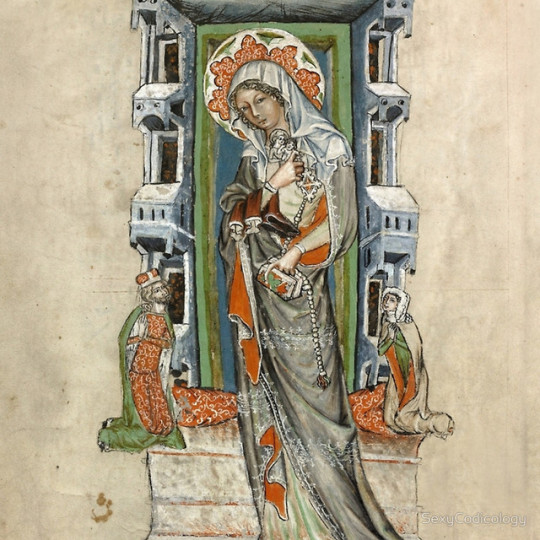
Saint Hedwig of Silesia - Feast Day: October 16th - Both Calendars
Patron of Orphaned Children
Life
The daughter of Duke Berthold IV of Merania and his second wife Agnes of Wettin, was born at Andechs Castle in the Duchy of Bavaria. Her elder sister Agnes married King Philip II of France (annulled in 1200), her sister Gertrude (killed in 1213) King Andrew II of Hungary, while the youngest Matilda (Mechtild) became abbess at the Benedictine convent of Kitzingen in Franconia, where Hedwig also received her education. By her sister Gertrude, she was the aunt of Saint Elizabeth of Hungary.
Duchess Consort
At the age of twelve, Hedwig married Henry I the Bearded, son and heir of the Piast duke Boleslaw I the Tall of Silesia. As soon as Henry succeeded his father in 1201, he had to struggle with his Piast relatives, at first with his uncle Duke Mieszko IV Tanglefoot who immediately seized the Upper Silesian Duchy of Opole. In 1206 Henry and his cousin Duke Wladyslaw III Spindleshanks of Greater Poland agreed to swap the Silesian Lubusz Land against the Kalisz region, which met with fierce protest by Wladyslaw’s III nephew Wladyslaw Odonic. When Henry went to Gasawa in 1227 to meet his Piast cousins, he narrowly saved his life, while High Duke Leszek I the White was killed by the men of the Pomerelian Duke Swietopelk II, instigated by Wladyslaw Odonic.
The next year Henry’s ally Wladyslaw III Spindleshanks succeeded Leszek I as High Duke; however as he was still contested by his nephew in Greater Poland, he made Henry his governor at Krakow, whereby the Silesian duke once again became entangled into the dispute over the Seniorate Province. In 1229 he was captured and arrested at Plock Castle by rivaling Duke Konrad I of Masovia. Hedwig proceeded to Plock pleading for Henry and was able to have him released.
Her actions promoted the reign of her husband: Upon the death of the Polish High Duke Wladyslaw III Spindleshanks in 1231, Henry also became Duke of Greater Poland and the next year prevailed as High Duke at Krakow. He thereby was the first of the Silesian Piast descendants of Wladyslaw II the Exile to gain the rule over Silesia and the Seniorate Province according to the 1138 Testament of Boleslaw III Krzywousty.
Widow
In 1238, upon his death, Henry was buried at the Cistercian convent of Trzebnica Abbey (Kloster Trebnitz), which he had established in 1202 at Hedwig’s request. The widow moved into the convent, which was led by her daughter Gertrude. She invited numerous German religious from the Holy Roman Empire into the Silesian lands, as well as German settlers who founded numerous cities, towns and villages in the course of the Ostsiedlung, while cultivating barren parts of Silesia for agriculture.
Hedwig and Henry had several daughters, though only one surviving son, Henry II the Piou, who succeeded his father as Duke of Silesia and Polish High Duke. The widow however had to witness the killing of her son, vainly awaiting the support of Emperor Frederick II, during the Mongol invasion of Poland at the Battle of Legnica (Wahlstatt) in 1241. The hopes for a re-united Poland were lost and even Silesia fragmented into numerous Piast duchies under Henry’s II sons. Hedwig and her daughter-in-law, Henry’s II widow Anna of Bohemia, establidshed a Benedictine abbey at the site of the battle in Legnickie Pole, settled with monks descending from Opatovice in Bobhemia.
Hedwig and Henry had lived a very pious life, and Hedwig had great zeal for religion. She had supported her husband in donating the Augustinian provostry at Nowogrod Bobrzanski (Naumburg) and the commandry of the Knights Templar at Olesnica Mala (Klein Oels). Hedwig always helped the poor and donated all her fortune to the Church. According to legend, she went barefoot even in winter, and when she was urged by the Bishop of Wroclaw to wear shoes, she took them in her hands. On 15 October 1243, Hedwig died and was buried in Trzebnica, while relics of her are preserved at Andechs Abbey and St. Hedwig’s Cathedral in Berlin.
Veneration
Hedwig was canonized in 1267 by Pope Clement IV, a supporter of the Cistercian order, at the suggestion of her grandson Prince-Archbishop Wladylaw of Salzburg. She is the patron saint of Silesia, of Andechs, and of the Roman Catholic Archdiocese of Wroclaw and the Roman Catholic Diocese of Gorlitz. Her feast day according to the General Roman Calendar is on October, 16. A 17th century legend has it, that Hedwig on a pilgrimage to Rome stopped at Zell in Austria, where she had healing waters spring up at a source which up to today bears her name.
In 1773 King Frederick II of Prussia, having conquered and annexed Silesia in 1742, had St. Hedwig’s Cathedral in Berlin built for the Catholic Upper Silesian immigrants, now the mother church of the Roman Catholic Archdiocese of Berlin.
Children
Hedwig and Henry I had seven children:
1. Agnes (ca. 1190 — before 11 May 1214).
2. Boleslaw (ca. 1191 — 10 September 1206/08).
3. Henry II the Pious (ca. 1198 — killed in Battle of Legnica, 9 April 1241)
4. Konrad the Curly (ca. 1198 — Czerwony Kosciol, 4 September 1213).
5. Sophie (ca. 1200 — before 22/23 March 1214).
6. Gertrude (ca. 1200 — Trebnitz, 6/30 December 1268), Abbess of Trebnitz
7. A son [Wladyslaw?] (before 25 December 1208 — 1214/17).
4 notes
·
View notes
Photo

11-19 ITALY - 1886: October the 17th, Saint Hedwig of Andechs. Saint Hedwig of Andechs (1174 - October 15, 1243) the Duchess of Silesia and Poland, and widow, became a Cistercian nun to Trzebnica. ... http://dlvr.it/Q1hMdB
1 note
·
View note
Photo


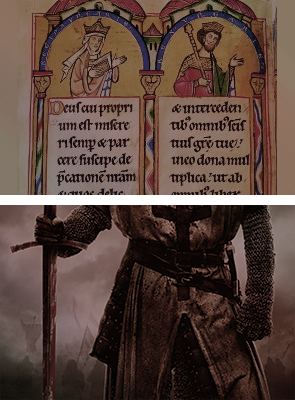

WOMEN’S HISTORY † GERTRUD VON ANDECHS (1185 – 28 September 1213)
Gertrud von Andechs-Meranien was one of the nine children of Berthold IV. von Andechs, Herzog von Meranien and Agnes von Rochlitz. Her sisters included Saint Hedwig von Andechs and the famously beautiful Agnes, the third wife of Philippe II de France. Sometimes before 1203, Gertrud married András, the younger son of III. Béla magyar király and Agnès d’Antioche. Following the death of Holy Roman Emperor Heinrich VI., András and his older brother, Imre, became involved in the power struggle between Otto von Brunswick₁ and Philipp von Schwaben². András followed his father-in-law by supporting Philipp while Imre supported Otto. That was only one cause of disagreements between András and Imre, who had been feuding ever since 1197. Gertrud and Andras were both considered extremely ambitious plotters who dreamed becoming the rulers of Hungary. Their dreams were dashed, however, when Imre’s wife, Constança d'Aragó, gave birth to a son, László, around 1200. In 1203, András plotted a new rebellion against Imre, supposedly at Gertrud’s instigation, but the rebellion failed that October and Gertrud was sent back to Germany while András was imprisoned. Imre fell ill in 1204 and he and András reconciled, which meant that Imre agreed to name András as László’s regent. Despite the fact that Pope Innocentius III had confirmed László as the heir of Hungary, András was quick to seize power after his brother’s death on 30 November 1204. Constança fled to Austria with her young son and András declared war, but László died of an illness in Vienna shortly after. This left András as the undisputed king of Hungary and Gertrud as his queen. Not long after becoming king, András made it known that he intended to recapture Halych, a city in what is now Ukraine that III. Béla had conquered in 1188, but lost to the Rurikid princes of the Kievan ‘Rus. In 1208, two of Gertrud’s brothers, Ekbert, Erzbischof von Bamberg and Heinrich II, Markgraf von Istrien, both fled to Hungary because they had both been accused of participating in the assassination of Philipp von Schwaben. András gave them both a warm welcome and granted Ekbert lands in what is now Slovakia. Previously, András had made another one of Gertrud’s brothers, Berthold, the Ban of Croatia and Dalmatia. András’ generosity to his brothers-in-law made the Hungarian nobility insanely jealous and they blamed Gertrud for it all. In 1213, András went to war with the Rurikids again and left Gertrud as regent. On 28 September 1213, Gertrud was brutally assassinated by Hungarian nobles in the presence of her young son, Béla. Following his return, András ordered the impaling of the assassin, Töre fia Péter, but the others went unpunished. In 1235, however, Béla became king and ordered the executions of Bánk Bár-Kalán and the other men who had killed his mother. One of Gertrud’s daughters was Saint Erzsébet of Hungary, who married Ludwig IV. von Thüringen and became famous for her generosity toward the poor.
₁ Son of Heinrich the Lion and Matilda of England. ² Son of Friedrich Barbarossa and Béatrice de Bourgogne; husband of Eirene Angelina; and father of Elisabeth and Kunigunde von Schwaben.
#gertrude of merania#house of arpad#german history#austrian history#european history#women's history#history#women's history graphics#nanshe's graphics#hungarian history#medieval
10 notes
·
View notes
Text
Schon toll, diese Frau!
Schon toll, diese Frau!
Flüchtlingsarbeit – ja, das war so ihr Ding. Hat ‘ne Menge für die deutsch-polnische Aussöhnung getan und sich dabei aufopferungsvoll um Armutsmigranten gekümmert. Echte Friedensstifterin. Selber war sie total bescheiden. Motto: Alles für die andern!
Hedwig von Andechs. Laser-Projektion, bearbeitet. Foto und Bearbeitung: JoBo, 10-2017.
Muss man sich mal vorstellen: Hat selber sieben Kinder und…
View On WordPress
0 notes
Text
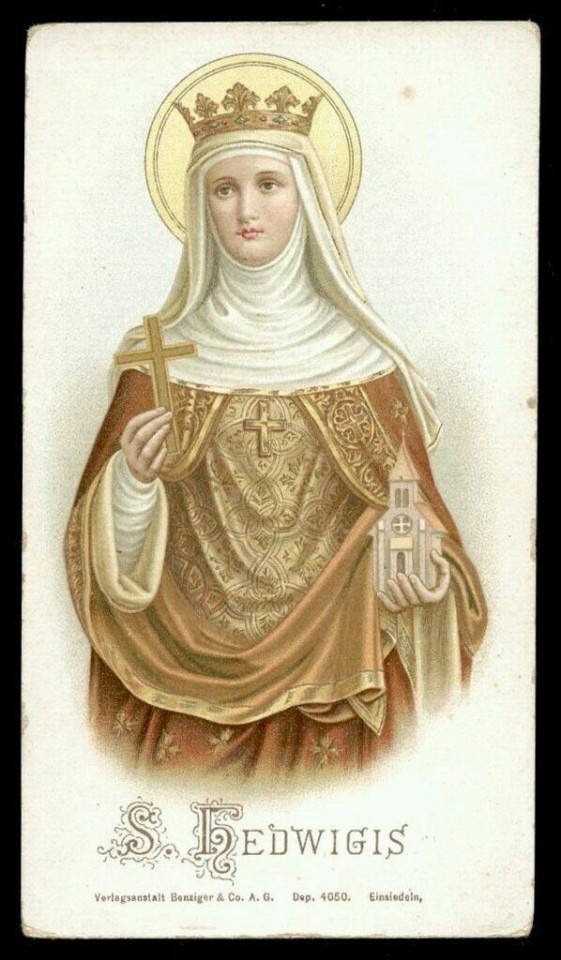
Hedwig of Silesia (also Hedwig of Andechs; 1174-1243) was a member of the Bavarian comital House of Andechs. She was Duchess of Silesia from 1201 and of Greater Poland from 1231 as well as High Duchess consort of Poland from 1232 until 1238. She was canonized by the Catholic Church in 1267 by Pope Clement IV.
#saints#catholic church#christianism#Świyntŏ Hyjdla#Heilige Hedwig von Andechs#Święta Jadwiga Śląska#Hedwig of Silesia#Księstwo śląskie#Herzogtum Schlesien#Slezské knížectví#royalty#House of Piast#Silesian Piasts#german aristocracy#Duchy of Wrocław#Królestwo Polskie#Kingdom of Poland#Regnum Poloniae
4 notes
·
View notes
Text
Feast of the Purity of the Blessed Virgin Mary, Dedication of the Church of Our Lady of Milan (1417), St Hedwig, St Gerard Majella and the Saints for 16 October
Feast of the Purity of the Blessed Virgin Mary:HERE:https://anastpaul.com/2022/10/16/feast-of-the-purity-of-the-blessed-virgin-mary-16-october/ Dedication of the Church of Our Lady of Milan (1417) by Pope Martin V – 16 October:HERE:https://anastpaul.com/2021/10/16/dedication-of-the-church-of-our-lady-of-milan-1417-by-pope-martin-v-and-memorials-of-the-saints-16-october/ St Hedwig of Andechs…
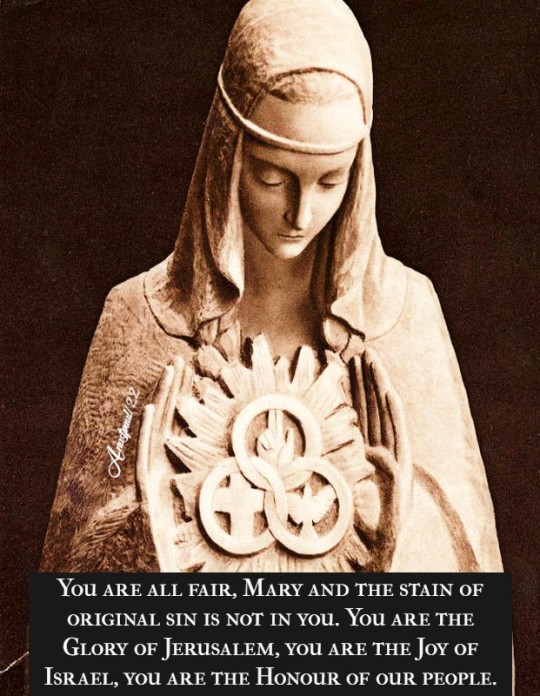
View On WordPress
#dedicationofthechurchofourladyofmilan#feastofthepurityoftheblessedvirginmary#stbertrandofcomminges#stgall#stgerardmajella#sthedwig
6 notes
·
View notes
Text
Egbert Psalter
Christ crowning Gertrude and Yaropolk, illumination from the Trier Psalter Maturnus of Cologne, from the earlier illuminations The Egbert Psalter (also known as the Gertrude Psalter or Trier Psalter) is a medieval illuminated manuscript Psalter preserved in the municipal museum of Cividale, Italy (Ms. CXXXVI). The psalter is an example of the illuminated manuscripts associated with the Ottonian Renaissance. It was originally created around the year 980 by the monks of the Abbey of Reichenau (a monk named Ruodprecht is mentioned in the original dedication) for Archbishop Egbert of Trier. In the mid-11th century, the book passed to Gertrude, wife of Iziaslav of Kiev. She included her prayer book as part of the codex and commissioned its illuminations, which curiously blend Byzantine and Romanesque traditions. In the 12th century, the codex was in the possession of the Andechs-Merania family, and was given to Elizabeth of Hungary either by her mother, Gertrude of Merania, or by her aunt, Saint Hedwig of Andechs. According to a 16th-century note on folio 8r, Saint Elizabeth gave the codex to the cathedral of Cividale in 1229. The book features a large picture of Apostle Peter venerated by Gertrude and her son Yaropolk, whose Christian name was Peter. It is known that Yaropolk was the first to build a church to St Peter in Kiev and that he placed an image of that saint on his coins. In 1075 he was sent by his dethroned father to Rome in order to secure the Pope's support in recompense for bringing Russ (Ruth) under the patronage of St Peter ("patrocinium beati Petri"). There are two letters of Pope Gregory VII to the king of Poland and to Svyatoslav II of Kiev admonishing them to return the Kievan throne to Izyaslav. More details Android, Windows
0 notes
Text
St. Elizabeth of Hungary
The Church remember St. Elizabeth of Hungary, Princess.
Ora pro nobis.
Saint Elizabeth of Hungary (7 July 1207 – 17 November 1231 AD), also known as Saint Elizabeth of Thuringia or Saint Elisabeth of Thuringia, was a princess of the Kingdom of Hungary, Landgravine of Thuringia, Germany, and a greatly venerated Catholic saint who was an early member of the Third Order of St. Francis, by which she is honored as its patroness.
Elizabeth was married at the age of 14, and widowed at 20. After her husband's death she sent her children away and regained her dowry, using the money to build a hospital where she herself served the sick. She became a symbol of Christian charity after her death at the age of 24 and was canonized on 25 May 1235.
Elizabeth was the daughter of King Andrew II of Hungary and Gertrude of Merania. Her mother's sister was Hedwig of Andechs, wife of Duke Heinrich I of Silesia. Her ancestry included many notable figures of European royalty, going back as far as Vladimir the Great of the Kievan Rus. According to tradition, she was born in Hungary, possibly in the castle of Sárospatak on 7 July 1207 AD.
Elizabeth was brought to the court of the rulers of Thuringia in central Germany, to be betrothed to Louis IV, Landgrave of Thuringia (also known as Ludwig IV), a future union which would reinforce political alliances between the families.[a] She was raised by the Thuringian court and would have been familiar with the local language and culture.
In 1221 AD, at the age of fourteen, Elizabeth married Louis; the same year he was enthroned as Landgrave, and the marriage appears to have been happy.
In 1223 AD, Franciscan friars arrived, and the teenage Elizabeth not only learned about the ideals of Francis of Assisi, but started to live them. Louis was not upset by his wife's charitable efforts, believing that the distribution of his wealth to the poor would bring eternal reward; he is venerated in Thuringia as a saint, though he was never canonized by the Church.
It was also about this time that the priest and later inquisitor Konrad von Marburg gained considerable influence over Elizabeth when he was appointed as her confessor. In the spring of 1226 AD, when floods, famine, and plague wrought havoc in Thuringia, Louis, a staunch supporter of the Hohenstaufen Frederick II, Holy Roman Emperor, represented Frederick II at the Imperial Diet held in Cremona.
Elizabeth assumed control of affairs at home and distributed alms in all parts of their territory, even giving away state robes and ornaments to the poor. Below Wartburg Castle, she built a hospital with twenty-eight beds and visited the inmates daily to attend to them.
Elizabeth is perhaps best known for the miracle of the roses which says that whilst she was taking bread to the poor in secret, she met her husband Ludwig on a hunting party, who, in order to quell suspicions of the gentry that she was stealing treasure from the castle, asked her to reveal what was hidden under her cloak. In that moment, her cloak fell open and a vision of white and red roses could be seen, which proved to Ludwig that God's protecting hand was at work.
Her husband, according to the vitae, was never troubled by her charity and always supported it. In some versions of this story, it is her brother in law, Heinrich Raspe, who questions her. Hers is the first of many miracles that associate Christian saints with roses, and is the most frequently depicted in the saint's iconography.
Almighty God, by your grace your servant Elizabeth of Hungary recognized and honored Jesus in the poor of this world: Grant that we, following her example, may with love and gladness serve those in any need or trouble, in the name and for the sake of Jesus Christ; who lives and reigns with you and the Holy Spirit, one God, for ever and ever.
Amen.
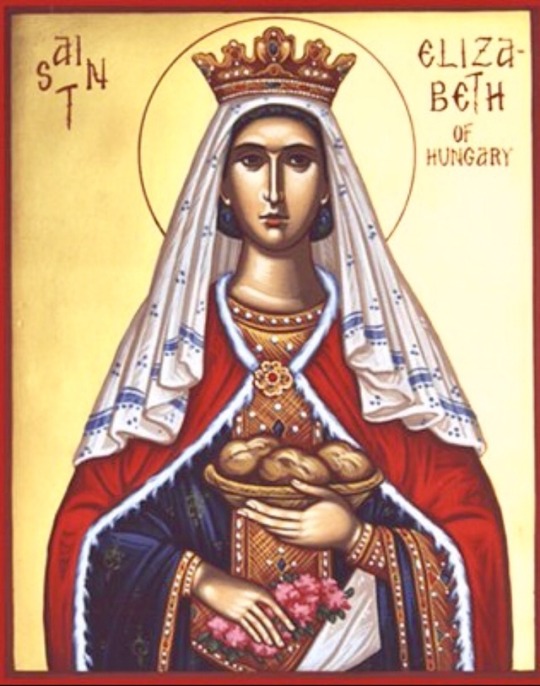
0 notes
Text
The 19th Sunday after Pentecost, Feast of the Purity of the Blessed Virgin Mary, Dedication of the Church of Our Lady of Milan (1417) and Memorials of the Saints - 16 October
The 19th Sunday after Pentecost, Feast of the Purity of the Blessed Virgin Mary, Dedication of the Church of Our Lady of Milan (1417) and Memorials of the Saints – 16 October
The 19th Sunday after Pentecost + Feast of the Purity of the Blessed Virgin Mary Dedication of the Church of Our Lady of Milan (1417) by Pope Martin V – 16 October:HERE:https://anastpaul.com/2021/10/16/dedication-of-the-church-of-our-lady-of-milan-1417-by-pope-martin-v-and-memorials-of-the-saints-16-october/ St Hedwig of Andechs (1174-1243) Mother, Widow, High Duchess of Poland, Apostles of…

View On WordPress
4 notes
·
View notes
Text
Saint of the Day - 16 October - St Hedwig of Andechs (1174-1243)
Saint of the Day – 16 October – St Hedwig of Andechs (1174-1243)
Saint of the Day – 16 October – St Hedwig of Andechs (1174-1243) Mother, Widow, High Duchess of Poland, Apostles of orphans, the poor, the sick, founder with her husband of Monasteries, schools and Churches, Administrator, peace-maker, Born in 1174 in Castle Andechs, Bavaria (part of modern Germany) and died on 15 October 1243 at at Trzebnica, Silesia (part of modern Poland). Also known as –…
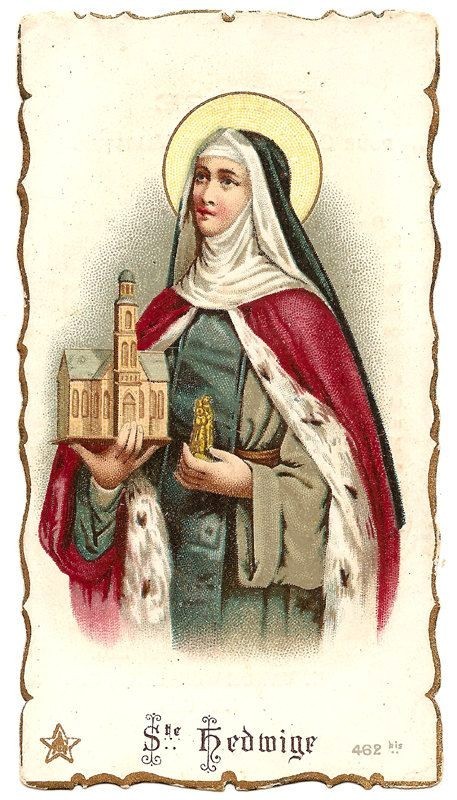
View On WordPress
11 notes
·
View notes